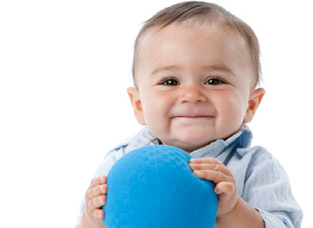
Toy Safety
As part of its continuing efforts to proactively address potential toy safety issues, ASTM International Committee F15 on Consumer Products has approved revisions to ASTM F963, Consumer Safety Specification for Toy Safety. Changes made to the standard include revisions to the section on heavy metals, the introduction of compositing procedures, and new safety requirements and technical guidance for bath toy projections, acoustics and other potential safety hazards in toys.
ASTM F963, under the jurisdiction of Subcommittee F15.22 on Toy Safety, includes guidelines and test methods to prevent injuries from choking, sharp edges and other potential hazards. The standard is reviewed and updated on a regular basis by the subcommittee, which includes technical experts from academia, consumer groups, industry and government.
"These revisions build on the already comprehensive F963 standard by proactively addressing areas where potential risks or opportunities for harmonization have been identified," says Joan Lawrence, F15.22 chairman and vice president, standards and government affairs for the Toy Industry Association (TIA).
Revisions now approved for F963 include the following:
- Heavy Metals - Limits for heavy metals in toy substrates have been added to the existing surface coating requirements. A soluble approach for determination of heavy elements in toys and toy components has been maintained as this has been demonstrated to be more closely correlated than total content with the amount of element which is bioavailable, and therefore with risk of toxicity.
- Compositing Procedure for Total Heavy Metal Analysis - Revisions outline detailed procedures for accomplishing this end by specifying the conditions under which compositing is allowable, when a composite result may be relied upon without further testing, and when testing of individual samples must subsequently be performed.
- Bath Toy Projections - Revisions are intended to address the potential hazards that may be presented by vertical, or nearly vertical, rigid projections on bath toys. This requirement is intended to minimize possible puncture or other hazards to the skin that might be caused if a child were to fall on a rigid projection.
- Among other revised areas of the standard are sections on jaw entrapment; toys with spherical ends; stability of ride on toys; requirements for squeeze toys attached to rings; use of cords, straps and elastics; packaging film; and yo-yo tether balls.
As part of the landmark Consumer Product Safety Improvement Act of 2008, the U.S. Congress endorsed both the F963 standard and the process under which it wass developed and is continually reviewed and revised. If the CPSC agrees that the revisions improve safety, ASTM F963-11 will replace the 2008 version of the standard as federal law in 180 days from notification of publication. For more information about the CPSIA and compliance with this law, visit the CPSC Web site.
ASTM International standards are available for purchase from Customer Service (phone: 610-832-9585) or at www.astm.org.
CONTACT Technical Information: Joan Lawrence, Toy Industry Association • New York, N.Y. • Phone: 212-675-1141 O ASTM Staff: Leonard Morrissey • Phone: 610-832-9719
 SN Home
SN Home Archive
Archive Advertisers
Advertisers Masthead
Masthead RateCard
RateCard Subscribe
Subscribe Email Editor
Email Editor